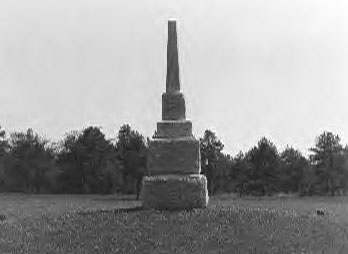|
The
Regulator Movement
During
the years preceding the American Revolution many North Carolina
people experienced strong feelings of discontent with the way in
which the provincial government's officials were conducting the
affairs of the colony. Their quarrel was not with the form of government
or the body of laws but with the malpractices and abuses of those
empowered to administer that government and those laws.
Grievances
affecting the daily lives if the colonists included excessive taxes,
dishonest sheriffs, and illegal fees. General scarcity of money
contributed to the state of unrest. Those residing in the western
part of the province, particularly, were isolated and out of sympathy
with the easterners; it was from these frontier counties that the
War of Regulation originated and grew.
(See
George Sims's Address
to the People of Granville County, 1765.)
Minor
clashes occurred until the spring of 1768, when an association of
"Regulators" was formed. Wealthier colonists considered
these Regulators to be "a mob." Allied in opposition to
what they considered unjust and tyrannical practices of government
officials, these Regulators never had an outstanding leader, though
there were several who were prominent in the movement, including
James Hunter, Rednap Howell, William Butler, and Herman Husband.
Husband, a Quaker and disciple of Benjamin Franklin, circulated
political pamphlets of a patriotic nature in seeking to effect reform
peacefully by influencing public sentiment.
Discouraged
over failure to secure justice through peaceful negotiations, and
considering the the government indifferent to their distress because
of the slowness of legal remedies to take effect, the reformers
took a more radical stand. Violence, lawlessness, and terrorism
reigned. When punitive measures were taken against them, the Regulators
defiantly refused to pay fees, terrorized those who administered
the law, and successfully disrupted court proceedings.
It fell
to royal Governor William Tryon to bring the backcountry revolt
to a speedy conclusion. In March, 1771, the governor's council,
determined to squelch the angry rebel farmers, advised Governor
Tryon to call out the militia and to march against the Regulators.
Volunteers
to the militia were mustered. When the expedition finally got under
way, General Hugh Waddell was ordered to approach Hillsborough by
way of Salisbury, with Cape Fear and western militia at his command.
Tryon and his army proceeded more directly towards Hillsborough.
General Waddell, however, with a small force of only 284 men, was
accosted on his way from Salisbury by a large body of Regulators;
in views of the numerical superiority of the opposition, the general
elected to turn back. On May 11, 1771, Governor Tryon and his forces
left Hillsborough intending to go to Waddell's rescue. After resting
on the banks of the Alamance Creek in the heart of Regulator country,
Tryon gathered his army of less than 1,000 men. Five miles distant
the army of Regulators, about 2,000 strong, had assembled. The battle
began on May 16 after the Regulators rejected Tryon's suggestion
that they disperse peacefully.
Lacking
adequate leadership, efficient organization, and munitions to defend
themselves successfully, the Regulators were no match for Tryon's
better-trained, equipped, and organized militia. Many Regulators
fled the field of battle, leaving their bolder comrades to fight
on.
Each
side lost nine men in the two hour skirmish. A large number of Regulators
were wounded. Tryon took about fifteen prisoners, of whom six were
executed later. The rebellion of the Regulators had been crushed
by military defeat; they had failed in their attempt to secure reform
in local government. Many of them moved on to other frontier areas
beyond North Carolina (see Watauga Settlement); those who stayed
were offered pardons by the governor in exchange for pledging an
oath of allegiance to the royal government.
The War
of Regulation, culminating in the Battle
of Alamance, is illustrative of the dissatisfaction of a large
segment of the colonial population during the period prior to the
American Revolution. The boldness with which these reformers opposed
royal authority provided an object lesson in the use of armed resistance,
one which revolutionaries would employ within a few short years
in the War for Independence.

Marking
the field of battle at Alamance stands a granite monument,
built in 1880 to those who fought there.
|